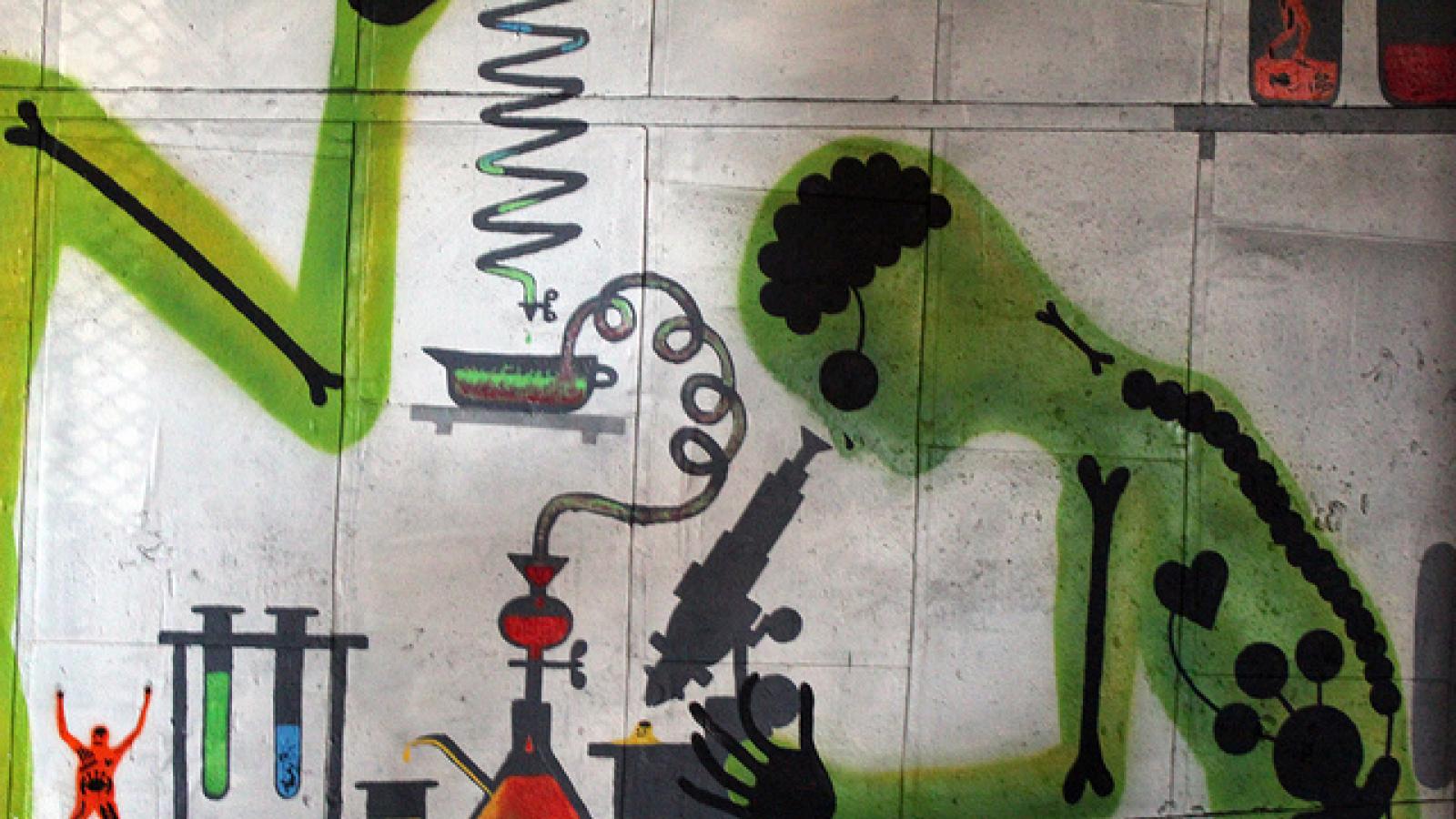Taking Note: Encouraging Academic & Artist Teams through NEA Research

In August, we issued new application guidelines for the NEA’s Research: Art Works grant program. We’ll discuss the guidelines in a webinar to be held on September 9, at 3:00 p.m. Eastern time. In one change to the guidelines from last year, we explicitly encourage partnerships between researchers and arts practitioners to study a question or problem. Through Research: Art Works, we aim over time to see greater knowledge- and resource-sharing between academic research centers and arts organizations. Our hypothesis is that more relevant and rigorous studies will emerge as a result.
Fortunately, several grants in our current portfolio already have thrived from such partnerships. Witness this catalogue of final papers from NEA research grants. In 2014, researchers from the California State University at Northridge worked with a theater company to conduct a quasi-experimental, longitudinal study. The research examined whether participation in a theater-based therapeutic intervention for autistic adolescents was associated with a variety of positive outcomes.
The findings deserve attention, but it’s also worth explaining the condition that was studied in participating teenagers: autism spectrum disorder (ASD). This is a neurological developmental disorder that significantly impairs social skills, language, and communication development, depending on where a child may be on the spectrum.
Although many scholars have used qualitative methods to assess the relation between the arts and outcomes as a function of autism, few have used quantitative methods, and still fewer have focused specifically on theater experiences. Theater is a unique art form that requires skills in social interactions, language, communication, and perspective; thus, it may prove a difficult activity for autistic youth.
Nevertheless, professors Ah-Jeong Kim and David Boyns tested the assumption that theater has a positive impact on autistic adolescents, and they used pre- and post-test methods to examine change over time in a variety of social and emotional outcomes. Although the study itself is quite small in scale, and the generalizations that can be made from this work may be limited, a number of important findings and trends emerged.
At the aggregated levels, significant improvements over time were observed for autistic adolescents in their own assessments of self-esteem, empathy, and comfort with others, for example. These findings are certainly promising in that the arts seem to have benefits for adolescents who have autism. With bigger sample sizes and additional trials, a study of this kind may shed more concrete light on the effects that theater participation has for adolescents with autism, and perhaps spark more interest and funding opportunities for arts programs tailored for autistic youth. More details and findings from this research project can be viewed in the final grantee paper itself.
Another NEA research grant involved a partnership between Sam Houston State University and the Texas Cultural Trust. This study explored the arts as a rural community development strategy. Grounded in the “interactional” theory of social organizations, the project attempted to quantify the relationships among community attachment, community capacity for the arts, and community satisfaction with local arts and cultural activities. As part of the study, the researchers developed and administered a new survey instrument, the Texas Rural Survey on Arts and Culture. The questionnaire included items on arts participation, community attachment, and community satisfaction, among other variables.
As the NEA plans for the 2017 administration of the Survey for Public Participation in the Arts (SPPA), this paper is of particular interest to us, especially as it relates to rural areas and access to the arts. Importantly, researchers found that perceived community capacity for the arts was positively related to domain-specific satisfaction in arts and cultural activities (examples of a domain-specific satisfaction is satisfaction of outdoor festivals versus satisfaction in musical performances). Community capacity for the arts was also related to general satisfaction in arts activities overall. Furthermore, arts participation was positively associated with perceptions of community attachment, as well as civic engagement. More details and findings from this research project can be viewed in the final grantee paper.
Another benefit of this paper for broader research on arts participation is that the researchers were able to ask questions not typically included in the SPPA. In addition to asking about attitudes and perceptions about the arts, the survey investigated whether the arts are available in a community, what the costs might be to participate, and the quality of the programming. Moving these types of questions, where feasible, into a nationally representative dataset like the SPPA could only help improve our understanding of the role that the arts play in the U.S., the value the arts hold for communities large and small, and ways to identify communities that lack opportunities for arts engagement.
We hope you’ll tune in to our webinar on September 9th! Meanwhile, if you have any questions about the research grants program, don’t hesitate to e-mail us at nearesearchgrants@arts.gov.




